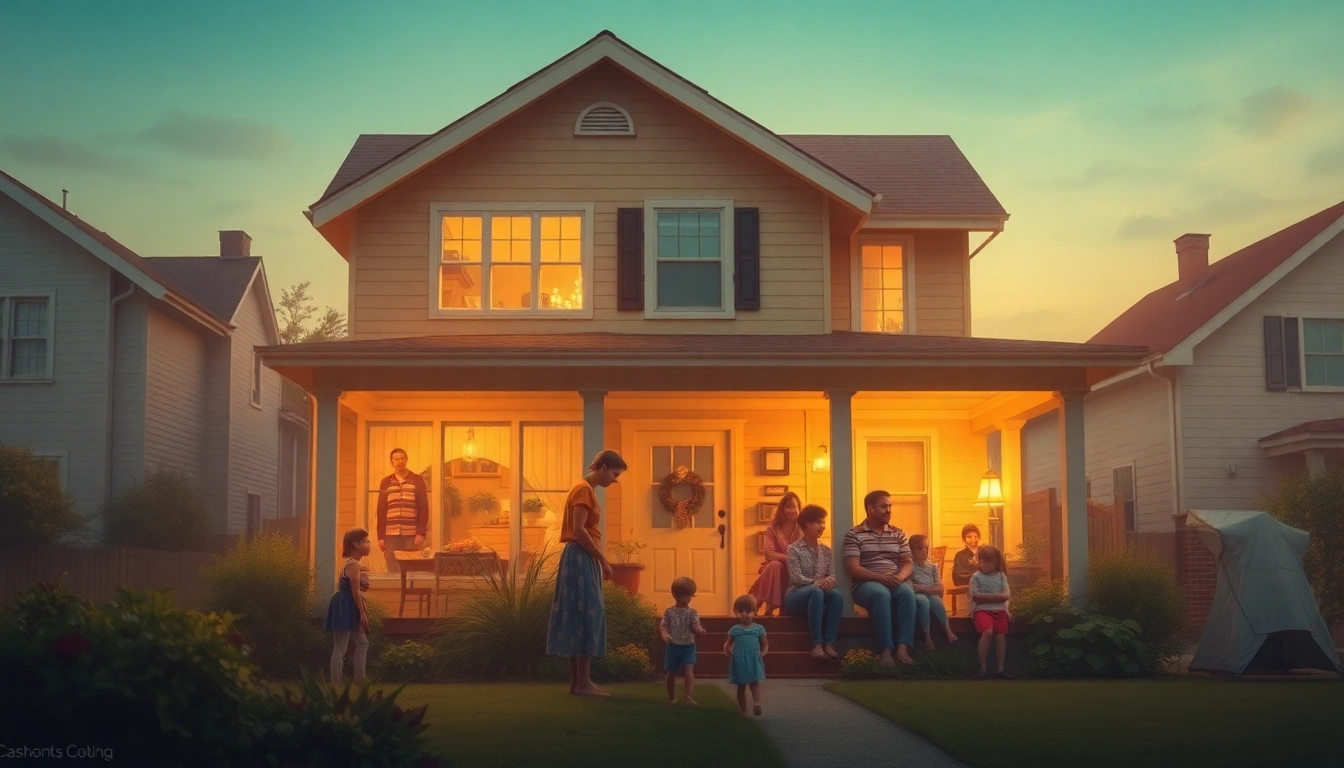Introduction to Here
The film Here has stirred discussions across various platforms since its announcement, culminating in its recent release. Directed by the acclaimed Robert Zemeckis and based on a graphic novel, this 2024 drama encapsulates themes surrounding love, family, and the passage of time. The film intertwines the experiences of multiple generations, presenting a narrative that not only entertains but also reflects profound human connections through a unique lens.
Overview of the Film and Its Themes
At its core, Here is a generational tale that explores the lives of various families inhabiting the same physical space over a century. It deftly navigates through time, presenting emotional and poignant moments that resonate with audiences from different walks of life. The central theme revolves around how a location can shape identities, catalyzing relationships and experiences that define human existence. The film’s narrative is rich with symbolism, where the home serves not just as a backdrop, but as a character in its own right, influencing the lives of all those who dwell within it.
Director and Cast Insights
Robert Zemeckis, a name synonymous with cinematic innovation, returns to the director’s chair to steer this ambitious project. Known for classics like Forrest Gump and The Polar Express, Zemeckis brings his distinctive storytelling flair, augmented by brilliant performances from Tom Hanks and Robin Wright. Their collaboration, reminiscent of their time in Forrest Gump, adds a layer of familiarity that invites audiences to draw parallels between their past roles and the new dynamics they explore in this film. With a diverse supporting cast, each actor contributes unique nuances that enhance the richness of the storytelling, making Here a canvas of complex interrelations.
Connection to Source Material
Adapted from a graphic novel that shares the same name, Here stands out for its ability to translate visual storytelling into a cinematic experience. The source material, acclaimed for its vivid illustrations and intricate plots, has laid a strong foundation for the film. Zemeckis and co-writer Eric Roth have worked meticulously to weave the narrative deeper, ensuring it captures not only the essence of the graphic novel but also extends its emotional depth through nuanced storytelling. This adaptation process showcases the transformative power of film, bridging visual art with dynamic character arcs.
The Narrative Structure of Here
The structure of Here is a deliberate and crafted blend of flashbacks and forward-moving timelines that allows viewers to witness the evolution of characters and their relationships. The film is designed to draw the audience into its intricate web of narratives and emotional landscapes.
Exploring Multiple Generations
The story explores several generations inhabiting the same house, each facing different life challenges, joys, and sorrows that contribute to the overarching tale. This multigenerational narrative provides a comprehensive view of family dynamics, showing how history and shared spaces influence both individual and collective identities. Each generation adds layers to the storytelling, with themes of resilience, loss, and enduring love recurring throughout.
Key Plot Points and Character Arcs
Key plot points within Here are highlighted by defining moments where characters confront their past and present, ultimately leading them toward personal growth and transformation. The arcs of these characters are meticulously crafted—viewers witness a young couple navigate the trials of early parenthood while an elderly couple reflects on their lifelong commitments. Such contrasts are pivotal, showcasing how varied experiences within the same physical environment can lead to diverse life paths.
Emotional Resonance with Audiences
The emotional core of Here strikes a chord with viewers as it masterfully delves into universal themes of family and belonging. The nostalgia it evokes, alongside moments of profound joy and heart-wrenching loss, encourages audiences to reflect on their own familial ties and the spaces they call home. The intimate portrayal of relationships ensures that each viewer can find threads of connection to their personal lives, fostering a sense of empathy and understanding.
Cinematic Techniques Used in Here
Zemeckis employs a range of cinematic techniques that elevate Here from a mere narrative to a sensory experience. The film’s aesthetic plays a crucial role in shaping how stories unfold within the lives of the characters.
Visual Storytelling Elements
The film’s cinematography stands out for its sweeping visuals and meticulous attention to detail. Each shot is purposeful, designed to evoke specific emotions, whether through vibrant depictions of family gatherings or somber representations of solitude. The use of lighting and color palettes reflects the emotional states of the characters and the time periods they inhabit, guiding the audience through a visceral journey. Zemeckis’ expertise in employing technology allows for seamless transitions between different timelines, making the narrative flow organically.
Sound Design and Its Role
Sound design in Here is equally impactful, layering emotional depth onto scenes through a meticulous assembly of ambient sounds, dialogue, and a haunting score. The soundtrack merges contemporary and classical scores that amplify the emotional weight of each scene. The nuances of sound draw viewers deeper into the atmosphere, reinforcing the themes of connection and isolation throughout the generations.
Comparative Analysis with Other Works
When compared to other works within Zemeckis’ filmography, Here shares thematic similarities with Forrest Gump. Both films explore time, memory, and the impactful nature of personal stories. However, Here distinguishes itself through a more intimate portrayal of family life, casting a broader net across generations. This enables a mosaic of stories woven together, each adding a layer of richness absent in more linear narratives.
The Cultural Context of Here
Set against a backdrop of cultural and societal shifts, Here reflects various familial structures, revealing how they evolve over time and what they signify in contemporary society.
Representation of Family Dynamics
The film’s portrayal of family dynamics resonates with audiences amid fluctuating societal norms about marriage, parenthood, and community. Here does not shy away from addressing the challenges faced by families today—be it economic struggles, emotional disconnect, or generational misunderstandings. By viewing these dynamics through different generational lenses, it portrays a holistic view of family life, filled with love and conflict.
Social Issues Addressed in the Film
Social issues such as identity, belonging, and the impact of tradition versus modernity are intricately woven into the fabric of Here. Characters grapple with their place in a rapidly changing world, mirroring real-life challenges faced by families globally. The film invites discussions about how cultural shifts affect interpersonal relationships, emphasizing that the need for connection is universal and timeless.
Impact on Modern Cinema
The impact of Here on modern cinema could be significant, as it emphasizes character-driven storytelling over grandiose spectacles. By placing relational narratives at the forefront, it encourages a return to storytelling focused on authenticity and emotional engagement, a trend that resonates well with contemporary audiences seeking depth in cinema.
Reception and Future Implications
As the film continues to make waves, discussions surrounding its reception reveal much about contemporary cinematic trends and audience expectations.
Critics’ Reviews and Public Reaction
Critically, Here has garnered a mix of reviews, with many praising the performances and emotional weight of the narrative. Audiences have responded positively to the film’s relatability and the depth of characterization, allowing them to see their own families reflected in the story. This connection has sparked conversations around family values and the importance of nurturing relationships in an increasingly digital world.
Box Office Performance
While box office performance remains a key indicator of any film’s success, Here has steadily gained traction since its release. Initial projections were modest, but word-of-mouth recommendations and positive critic reviews have driven increased interest, allowing it to surpass expected earnings. This suggests that audiences are willing to support films that resonate with their experiences and values.
What’s Next for the Filmmakers Behind Here?
The success of Here may open the door for further collaborations among its filmmakers. Zemeckis has long been an innovator in the film industry, and following this project, one can anticipate a continuation of stories that marry emotional depth with inventive storytelling techniques. It would not be surprising if he chooses to further explore themes that resonate deeply with audiences, such as identity and human connection.



